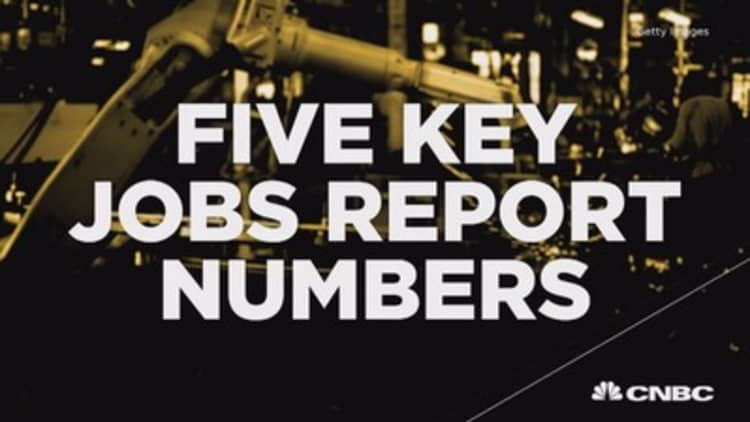
Evaluating the June jobs report depended heavily on point of view.
For those expecting signs of surging economic growth, there was only a smattering of things to like. For those, however, savoring what appear to the last vestiges of the Federal Reserve's highly accommodative relationship with Wall Street, there were multiple things to latch onto.
The 223,000 nonfarm jobs created in the month were below the previous 12-month average of 250,000 and missed the mark in terms of expectations, as economists predicted 230,000. Yes, the unemployment rate dropped two-tenths to 5.3 percent, the lowest level since April 2007, but that was due to a slide in the labor force participation rate, from 62.9 percent to 62.6 percent, the lowest figure since October 1977.
Worse, wage growth continues to be subdued, with an unchanged June figure equating to an annualized rate of 2 percent that is barely keeping pace with inflation.
That's the bad news for financial markets, however. The good news is that the folks who watch such numbers and trade on them now believe the Fed won't start hiking interest rates until 2016. Chicago Mercantile Exchange traders assign just a 12 percent chance of a September rate hike, 26 percent in October and 48 percent in December, with the 50 percent threshold not broken until the January 2016 contract, which implies a 65 percent chance of a rate hike.
That's counter to Wall Street consensus, which believes the U.S. central bank will move off zero rates either in September or, at the latest, December.
"In some ways it was a Goldilocks report," said Russ Koesterich, chief investment strategist at BlackRock. (Tweet This) "You still see strength from job creation, the hourly earnings number was on the soft side. But (for those) worrying about the Fed, it offered the best of both worlds. In some ways, it was not too hot or too cold."
The Fed has been locked on zero rates since late 2008, but members have indicated they want to begin normalizing policy at some point this year. However, liftoff has been pushed back multiple times as the Fed Open Market Committee looks for evidence of sustained inflation along with a jobs market that appears close to full employment.
"It's becoming harder to encapsulate the progress of the economy with one number. There's more heterogeneity with wages and inflation than there was 20 years ago," Koesterich said. "We still think they move this year."
Markets weren't so sanguine, though.
After opening higher, major stock indexes moved negatively through the trading session Thursday. Worries over a Greek debt default weighed on sentiment, but there also were concerns that the jobs report may simply signify an economy still spinning its wheels in the mud of persistent sub-3 percent growth.
"We now call into question the previously overzealous assessment of hiring in Q2," Lindsey M. Piegza, chief economist at Stifel Fixed Income, said in a note. "Payrolls remain positive, but the pace is modest at best, wage inflation is virtually nonexistent and the labor force participation rate continues to decline with an augmented unemployment rate near 11 percent. Does this sound like a labor market ready to withstand a rising rate environment?"






